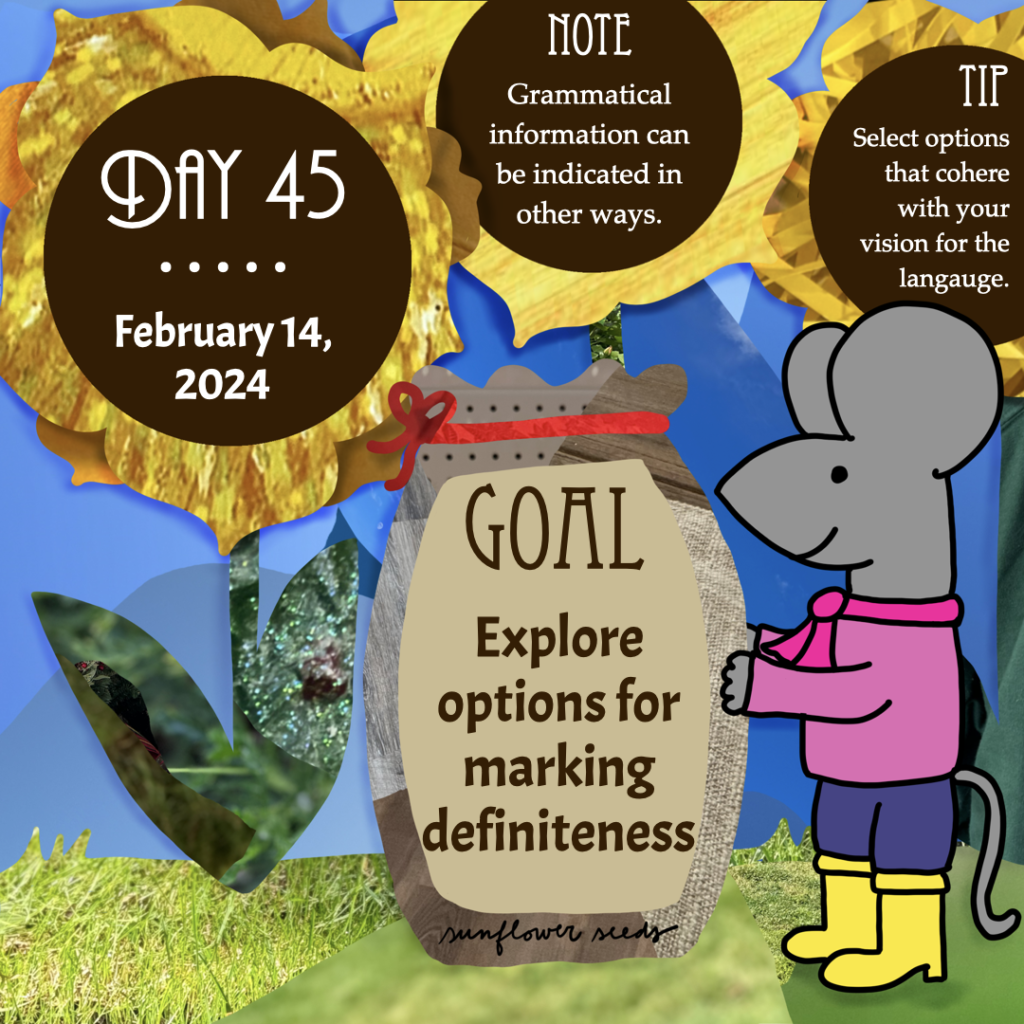
Goal: Explore options for marking definiteness
Note: Grammatical information can be indicated in other ways.
Tip: Select options that cohere with your vision for the language.
Work focus: Brainstorm/Learn/Try
Some languages have special inflections or grammatical words to indicate definiteness for a noun. In such systems, there might be a form to indicate the noun is definite (e.g. “the tree”) and/or indefinite (e.g. “a tree”). Marking definiteness can be a way of indicating whether the noun is old, or previously established, information in the discourse or whether the noun is new information. Consider the difference between saying “I see the rock” versus “I see a rock.” Using the definite “the” indicates that the rock is something that has either already been specifically mentioned in conversation or is physically present and salient to the participants of the conversation, making it a natural topic of discussion. The indefinite “a”, on the other hand, indicates that the rock is new information being introduced to the discourse.
For instance, you might start a story with “Yesterday I saw a rock. The rock had this little hole in it, and while I was looking at it, a little mouse popped out!” Notice that once the rock has been established in the conversation, the next mention is accompanied by the definite “the” to indicate it is now old information. Later, “a” is used with mouse—a new noun being introduced to the conversation.
If you choose to mark definiteness, you will need to decide if one form will be unmarked, as well as deciding what lexical sources you will use for any markers you want to have in the language.
Sources for indefinite markers might be words like “one” or “some” while definite markers might grammaticalize from words like demonstrative determiners (“this, that”) or spatial adverbs like “here”. So far, you’ve only been tasked with creating nouns and verbs, so some of these lexical sources may be pushing you in new directions in terms of lexical creation. And that’s fine! You may create the forms and use them for grammaticalization before having full systems of determiners, numbers, or adverbs in the language. You’ll find that language creation is, quite often, a cyclical process, where making one decision for one category actually requires making several decisions about other areas, too.
If you don’t want to mark definiteness, there are other strategies you can employ to convey the same information. Later prompts will focus on words like demonstrative determiners, which can convey definiteness when necessary (e.g. “that tree, this tree”). In some languages, word order or particular case-marking can be used to indicate definiteness where necessary. If you have never learned a language lacking definite markers, you might be surprised at how rarely you need to specify definiteness in conversation—context is often enough to specify which noun you’re referring to.
